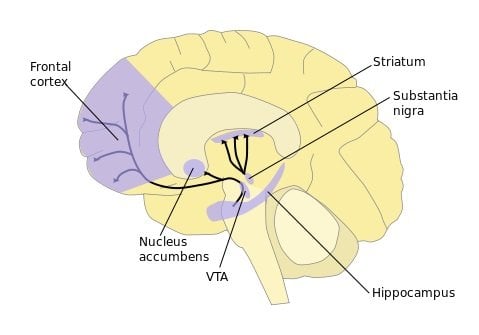ADHD drug helps improve brain functional connectivity in cocaine addiction.
A single dose of a commonly-prescribed attention deficit hyperactivity disorder (ADHD) drug helps improve brain function in cocaine addiction, according to an imaging study conducted by researchers from the Icahn School of Medicine at Mount Sinai. Methylphenidate (brand name Ritalin®) modified connectivity in certain brain circuits that underlie self-control and craving among cocaine-addicted individuals. The research is published in the current issue of JAMA Psychiatry, a JAMA network publication.
Previous research has shown that oral methylphenidate improved brain function in cocaine users performing specific cognitive tasks such as ignoring emotionally distracting words and resolving a cognitive conflict. Similar to cocaine, methylphenidate increases dopamine (and norepinephrine) activity in the brain, but, administered orally, takes longer to reach peak effect, consistent with a lower potential for abuse. By extending dopamine’s action, the drug enhances signaling to improve several cognitive functions, including information processing and attention.
“Orally administered methylphenidate increases dopamine in the brain, similar to cocaine, but without the strong addictive properties,” said Rita Goldstein, PhD, Professor of Psychiatry at Mount Sinai, who led the research while at Brookhaven National Laboratory (BNL) in New York. “We wanted to determine whether such substitutive properties, which are helpful in other replacement therapies such as using nicotine gum instead of smoking cigarettes or methadone instead of heroin, would play a role in enhancing brain connectivity between regions of potential importance for intervention in cocaine addiction.”

Anna Konova, a doctoral candidate at Stony Brook University, who was first author on this manuscript, added, “Using fMRI, we found that methylphenidate did indeed have a beneficial impact on the connectivity between several brain centers associated with addiction.”
Dr. Goldstein and her team recruited 18 cocaine addicted individuals, who were randomized to receive an oral dose of methylphenidate or placebo. The researchers used functional magnetic resonance imaging (fMRI) to measure the strength of connectivity in particular brain circuits known to play a role in addiction before and during peak drug effects. They also assessed each subject’s severity of addiction to see if this had any bearing on the results.
Methylphenidate decreased connectivity between areas of the brain that have been strongly implicated in the formation of habits, including compulsive drug seeking and craving. The scans also showed that methylphenidate strengthened connectivity between several brain regions involved in regulating emotions and exerting control over behaviors—connections previously reported to be disrupted in cocaine addiction.
“The benefits of methylphenidate were present after only one dose, indicating that this drug has significant potential as a treatment add-on for addiction to cocaine and possibly other stimulants,” said Dr. Goldstein. “This is a preliminary study, but the findings are exciting and warrant further exploration, particularly in conjunction with cognitive behavioral therapy or cognitive remediation.”
Notes about this neuropharmacology and addiction research
Additional co-authors included Nora D. Volkow, MD, the Director of the National Institute on Drug Abuse; Dardo Tomasi, the MR director at BNL; and Scott J. Moeller, PhD a postdoctoral fellow in psychiatry at Mount Sinai.
This research was supported by grants from the National Institute on Drug Abuse (grants 1R01DA023579 and 1F32DA030017-01) and the Intramural Research Program of the National Institute for Alcohol Abuse and Alcoholism, divisions of the National Institutes of Health.
Contact: Mount Sinai Press Office – The Mount Sinai Hospital / Mount Sinai School of Medicine
Source: The Mount Sinai Hospital / Mount Sinai School of Medicine press release
Image Source: The dopamine pathway image is credited to the NIDA/NIH and is in the public domain.
Original Research: Abstract for “Effects of Methylphenidate on Resting-State Functional Connectivity of the Mesocorticolimbic Dopamine Pathways in Cocaine Addiction” by Anna B. Konova, MA; Scott J. Moeller, PhD; Dardo Tomasi, PhD; Nora D. Volkow, MD; Rita Z. Goldstein, PhD in JAMA Psychiatry. Published online June 26 2013 doi:10.1001/jamapsychiatry.2013.1129







